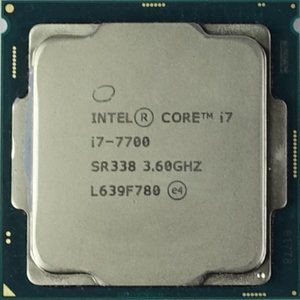
This CPU does not have an open multiplier compared to the core i7-7700K and also has a significantly lower base clock. In addition, Intel's other values (e.g. Ringbus) deliberately chosen in such a way that even an overclocking over an increase BCLK hardly makes any sense.
If the factory-determined base clock is still 3.6 GHz. so the CPU manages to operate them with 4.0 GHz Turbo Core even under extreme loads on all cores. Let's look at how the CPU behaves under different loads.
Core Voltages (Vcore)
However, before we get to the power consumption and the resulting temperatures by converting it into waste heat, we first compare the core voltage (Vcore), which should not be confused with the VID adjustable in the BIOS (which is always higher). What we measure here are the real voltage values provided by the converters for the CPU.
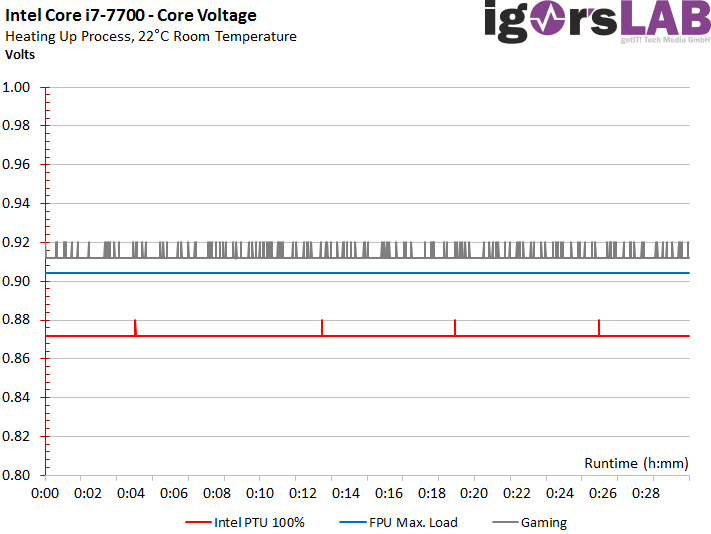
We can clearly see that the tension decreases as the loads increase. This is necessary to ensure that the allowable loss line of the CPU is not exceeded and to ensure that the CPU is not destroyed. The higher the load, the lower the voltage differences in the curve.
Normal Load: Gaming
We're re-determining the gaming load with Watchdogs 2. First, consider the power consumption as a total value, the proportion of computing units (IA Core) and the remaining functional areas such as cache, memory controller, etc. (Uncore).
For example, the standard gaming load requires an average of 50 to 52 watts for the entire CPU, which is a good value and still significantly lower than what Intel specifies for the TDP class in question. You can also see that only up to 40 watts are required for the computing units, because the difference to the total power consumption is distributed over the rest of the CPU.
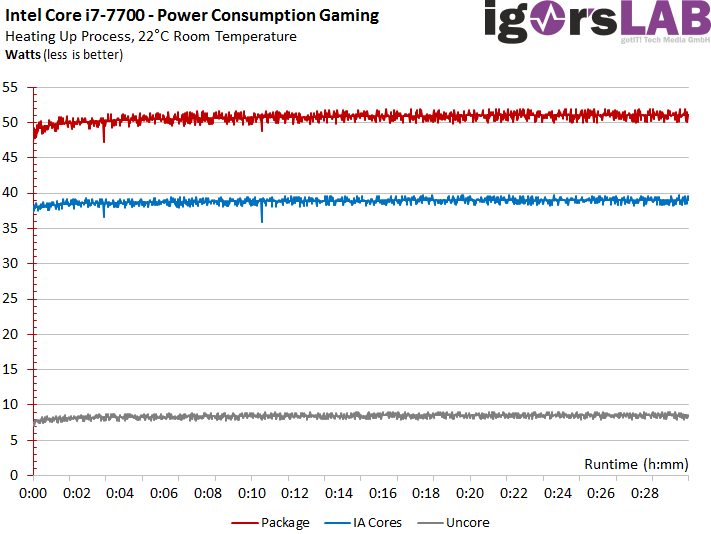
In contrast to the increase in temperatures, we have already seen a smaller increase in power consumption values, so that the losses due to leakage currents after heating can increase to up to 1.7 watts.
Temperatures rise to varying degrees depending on the position of the respective readout sensor, but stabilize after more than 24 minutes. The package warms up the slowest.
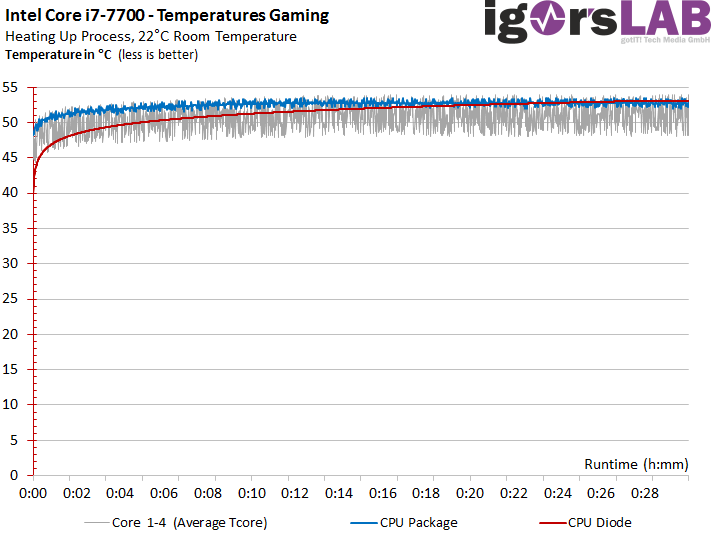
Heavy Load: Torture (Floating Point Unit)
At the next run we let the CPU calculate again, so that a measurably higher power consumption of up to 63 watts results. Losses from leakage currents as warming rise also remain in the same frame as gaming.
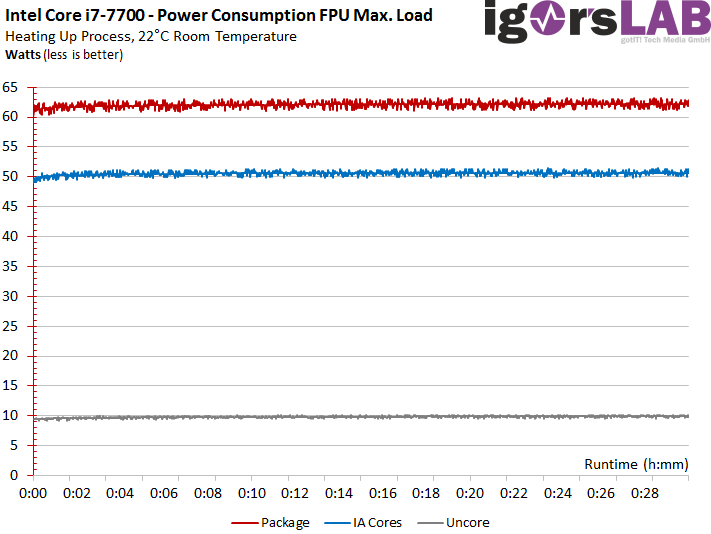
Temperatures are also rising significantly, and once again everything already written for the gaming scenario applies. With up to 58°C, however, everything is still very easy to shear and can be cooled well with simpler air coolers.
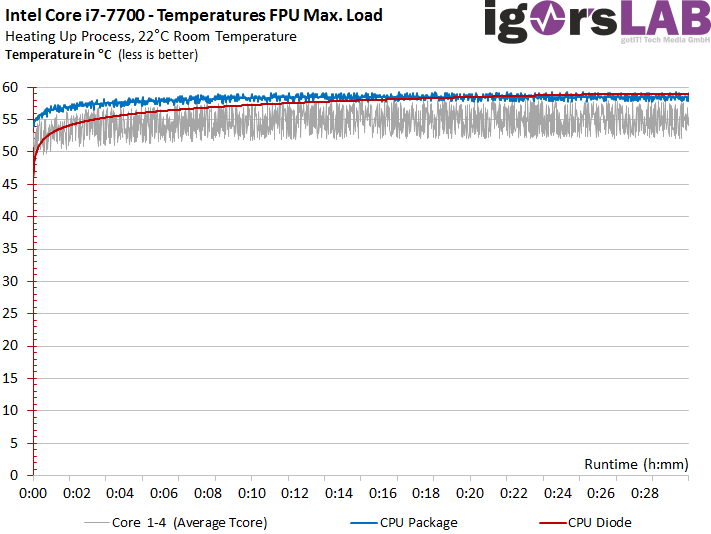
Maximum Load: Intel Power Thermal Utility (100%)
If we start the power virus par excellence, then the power consumption increases again very significantly. With up to 88 watts for the entire CPU, you are already scratching at the brand that Intel generally specifies as a TDP. Interestingly, the further losses due to higher leakage currents after heating do not exceed the 2 watt limit compared to the cold CPU.
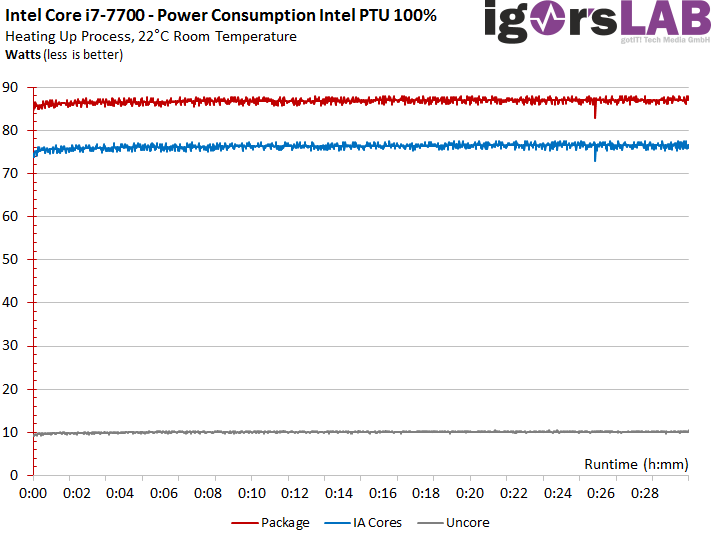
With the temperatures, we can see that the package now remains a little cooler and rather marks the lower limit of the averagetemperature over all cores, while the readout value of the package flanks the peak values.
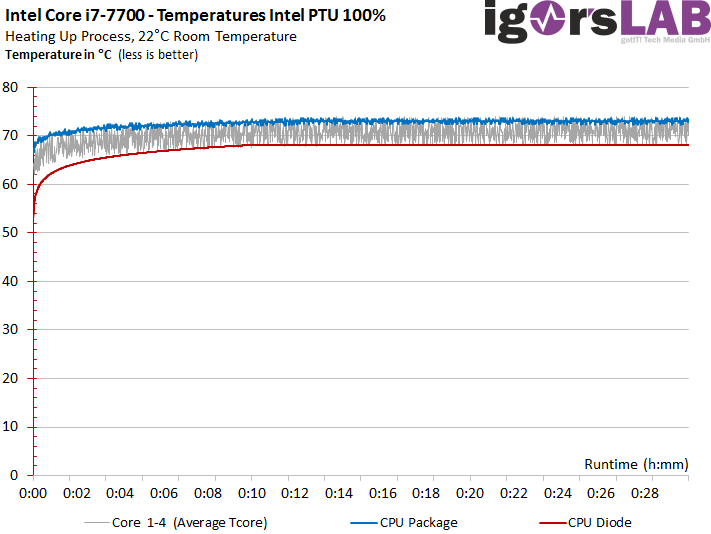
Intermediate conclusion
We may have caught a rather average CPU, which is also not a problem in terms of cooling. The maximum clock speed of four GHz for all cores, when combined with full load operations, is not enough to match the performance of the Core i7-7700K, but it is a good compromise of efficiency, computing power and waste heat to be disposed of.
- 1 - Einleitung
- 2 - Z270, Optane, Overclocking-Tools und HD Graphics 630
- 3 - Test-Setup und Overclocking
- 4 - Benchmarks: Rendering und Office
- 5 - Benchmarks: Workstation-Anwendungen
- 6 - Benchmarks: DTP und Multimedia
- 7 - Benchmarks: Gaming und integrierte Grafik (iGP)
- 8 - Core i7-7700K: Leistungsaufnahme & Temperaturen
- 9 - Core i7-7700: Leistungsaufnahme & Temperaturen
- 10 - Core i5-7600K: Leistungsaufnahme & Temperaturen
- 11 - Core i5-7600: Leistungsaufnahme & Temperaturen
- 12 - Unterschiedliche Chipqualität und ihre Folgen
- 13 - Fazit

































Kommentieren